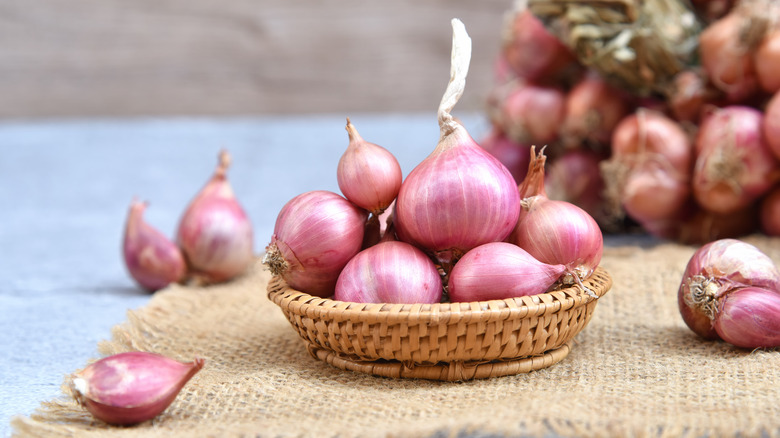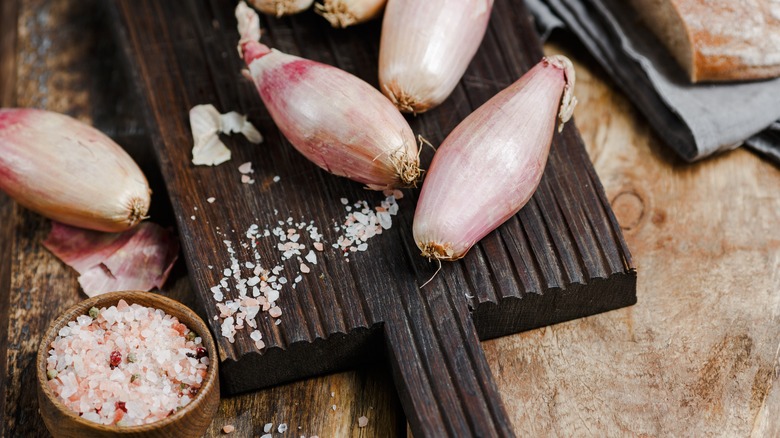Soak Shallots In Cold Water To Bring Out Their Best Flavor
Although smaller and sweeter than their fellow allium family member, the onions, shallots are equally versatile as kitchen ingredients. There's hardly any dish that won't taste better with their presence, whether they're added cooked or raw; even salad dressing becomes richer and more complex with them. Even though their sharp, aromatic bite isn't as strong, shallots are great alternatives to white onions. Their sweeter flavor also comes out as they get cooked and their natural sugars caramelize, hence the popularity of fried shallots as an all-around garnish among various Southeast Asian cuisines. Plus, when sliced and minced properly, they retain that delightful crunch onions are also known for.
If you haven't tried using raw shallots as a garnish, it's time to expand this ingredient's repertoire in your kitchen. Beyond using them in a mignonette to serve with raw oysters, you can also pickle shallots so you can toss them with your favorite salad, add them to tacos and ceviche, and give a crispy zest to burgers and sandwiches. To bring out their best flavor — and mellow out their acidity — soak them in cold water after slicing. You can also place the slices in a colander so you can rinse them under running water. The water removes the bitterness inherent to alliums by dispersing the sulfuric compounds that cause it. The shallots also become more crisp afterward.
After rinsing or cold-soaking them, drain the water from your shallots and place them on a paper towel. Let them dry with gentle pats.
Use the shallot peel as a nutritious flavoring ingredient, too
Don't throw out the shallot skin you're left with after slicing. Once you peel off its paper-thin outer layers, you have yet another ingredient that can amp up the flavors of future meals. The next time you make a broth, add shallot peel for extra flavor and a more robust color. Toast and grind the discarded skin into fine powder that you can sprinkle on soups, entrées, and sauces. Toast the peels, too, so you can infuse oils and vinegars with shallot's delicate sweetness. Basically, any cooking method you use with leftover onion peels can be done with leftover shallot skin. Just remember to clean them of dirt before adding them to other food items.
Aside from enhancing the flavor of your meals, reducing your kitchen waste, and maximizing what you paid for the whole ingredient, using shallot peel in your cooking has nutritional benefits. Research has found this part of the produce to be abundant in a type of flavonoid, which is an anti-inflammatory and antioxidant agent. Specifically, shallot peel is discovered to be rich in phenolics, which also holds promise as a natural food preservative.

